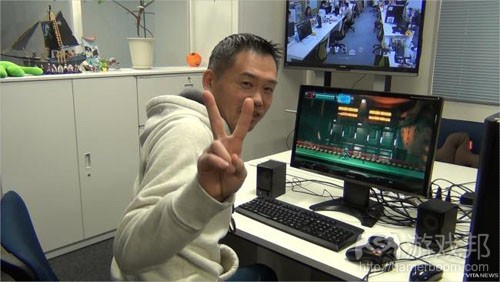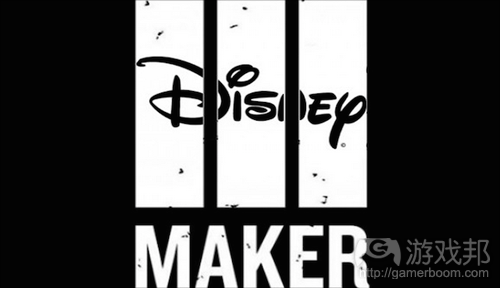每日观察:关注App Store发布独立游戏推荐模块(3.25)
1)据pocketgamer报道,苹果App Store最近发布了一个“独立游戏展示”模块,推荐该平台上最佳独立游戏作品。
值得注意的是,苹果是根据特定开发者的表现来推荐游戏,而不是从其他模块的游戏中甄选出最佳者。首个获得推荐者是瑞典开发商Simogo,其代表游戏是《DEVICE 6》和《Year Walk》。
2)据pocketgamer报道,中国网络巨头腾讯日前宣布2013财年(载止2013年12月31日)总收益为99亿美元,同比上年增长38%,利润达25亿美元,增长22%。
在第四季度,腾讯增值服务部门收益同比上季度增长3%,QQ手机游戏和微信手机游戏表现强劲,创收超过6亿人民币(约1亿美元)。
腾讯表示微信用户已达3.35亿人,未来将向国际市场进一步扩张。
3)据gamezebo报道,日本游戏开发元老Keiji Inafune(代表作包括《Mega Man》等)在上周的GDC座谈会上谈到了文化差异导致日本游戏,包括独立游戏难以在西方市场取胜。
Polygon报道曾提到日本独立游戏市场与同人作品(游戏邦注:创作者根据现成的IP创造漫画、电子游戏等粉丝作品)市场并存的情况,称这种“粉丝服务优先”的态度令开发者的作品价值大打折扣。除此之外,独立
游戏开发在日本也并不像在西方市场那样自由。尽管Keijin Inafune在众筹平台Kickstarter上为《Mighty No.9》筹得了380万美元(比预期多4倍),但他也承认众筹平台在日本仍然是个未知数。
4)据gamasutra报道,迪士尼日前宣布斥资5亿美元(外加基于表现的4.5亿美元)收购YouTube旗下平台Maker Studios(成立于2009年)。
值得注意的是,Maker Studios曾制作了热门的电子游戏相关内容,其中包括PewDiePie、TotalBiscuit、Game Grumps以及Yogscast。
迪士尼称这一收购举措的考虑因素除了获得YouTube用户(YouTube每月浏览量达55亿次,其5.5万个频道注册用户达3.8亿)之外,还包括后者的技术和分析能力。
需要指出的是,不久之前华纳兄弟也向YouTube旗下游戏网站Machinima投入巨资。
5)据pocketgamer报道,Double Fine图像程序员Oliver Franzke在上周的GDC 2014大会上谈到了平台分裂性的问题,称Double Fine已经意识到市场上至少存在8个需要考虑的平台,WindowsOSX, Linux, iOS手机和平板电脑,Android手机和平板电脑,而后者又包含了PowerVR, NVIDIA, Qualcomm, Vanilla Android以及类似Ouya这种衍生平台。
Franzke认为Android设备运行表现的主要挑战就在于GPU上的差异,因为它们的芯片非常不同,由于市场上的Android设备型号广泛,开发者通常无法“准确掌握设备的性能”。(本文为游戏邦/gamerboom.com编译,拒绝任何不保留版权的转载,如需转载请联系:游戏邦)
1)Open shop: Apple launches Indie Game Showcase on App Store
by George Osborn
In what’s likely to prove an interesting move for small studios, Apple has unveiled a new Indie Game Showcase on the App Store designed to highlight the best titles from indie outfits on the platform.
Rather than acting as a full blown showcase for a whole selection of indie developers in the manner of other curated sections, Apple has instead focused it on a particular developer, enlisting the studio’s help for curation.
Indie eye
Pitched as celebrating a “popular game and its creative team”, the first showcase has been curated by Swedish developer Simogo – the studio behind both DEVICE 6 and Year Walk.
The spot features both Simogo’s own games and hand picked recommendations from the team and opens up Apple’s editorial selection process arguably for the first time.
Indeed, in Apple’s own words selling the new section it states that “independent studios prove that what really matters is the size of your dream”.(source:pocketgamer)
2)Mobile games generate $100 million for Tencent in Q4 2013
by Jon Jordan
Chinese internet company Tencent (HKG: 0700) has announced its unaudited FY13 results for the 12 months ending 31 December 2013.
Total revenue was $9.9 billion, up 38 percent year-on-year.
Profit was $2.5 billion, up 22 percent.
On the up
“During 2013, we achieved sustained growth in revenue and earnings, while further embracing mobile internet and starting mobile monetization,” said CEO Ma Huateng.
“We migrated our flagship QQ service from a primarily PC to a primarily smart phone experience and enhanced our market-leading Weixin/WeChat app from a communications tool to a multi-functional platform, through initiatives such as smart phone games, Official Accounts and Weixin Payment.
Mobile rising
During Q4, its online and games saw growth, with revenue from Tencent’s Value-Added Services division up 3 percent quarter-on-quarter.
Mobile games on QQ and WeChat performed strongly, with Tencent saying they generated over RMB 600 million – around $100 million- during Q4 2013.
Tencent said that total users for WeChat (called Weixin in China) was 355 million, with future international expansion for WeChat being targeted in “specific geographic regions”.
It will also be investing in app distribution during 2014; something that’s already happening through the QR codes used in WeChat.
Tencent ended the quarter with net cash worth $5.9 billion.(source:pocketgamer)
3)Keiji Inafune on Japan’s struggle to be relevant in games again, and what it has to do with indie
By Jim Squires
If anyone remembers the heyday of Japanese gaming’s global domination, it’s Keiji Inafune. The man responsible for Mega Man, Dead Rising and Onimusha has been a champion in the marketplace since the NES days. He recently left Capcom to form his own indie games studio, Comcept, and his first creator-owned project, Mighty No. 9.
It’s a pretty familiar story; we’ve seen plenty of notable developers go this route in the West. But in Japan, Inafune is an anomaly.
And that might just be what’s wrong with Japanese gaming.
At a GDC panel last week dubbed “Meanwhile, in Japan,” Inafune was joined on stage by Mark MacDonald of Japanese localization company 8-4. The two explored the cultural differences that have limited Japan’s growth in the West, including their indie scene.
“The indie market in Japan exists in parallel with the doujin market,” writes Polygon’s Alexa Ray Corriea on her takeaways from the event, “an artistic sphere in which creators take already-owned IP and build fan works like comics and video games based on them.”
As you can probably gather, this “fan-service first” attitude makes marketing and selling the creations of such developers an unacceptable practice, relegating their wares to the internet equivalent of the back alley. “You just see them pouring all this love in,” MacDonald said. “You kind of think, why did they use those [trademarked] characters? Because they can never sell this game. And it’s such a high quality, well-crafted game.”
In an environment like this, indie game development must not be seen as the golden parachute to freedom that some Western developers treat it as. In fact, despite raising $3.8 million on Kickstarter for Mighty No. 9 – more than 4x what he was seeking – Inafune says that Kickstarter is still very much an unknown in Japan.
Inafune’s success might be enough to change all of that. Mighty No. 9 could turn out to be Japan’s Double Fine Adventure moment, signaling to Japanese game creators that it’s ok to go it alone and seek out crowd-funded support. “Mighty No. 9 has really broken it open in terms of people hearing about it and mainstream outlets picking it up,” says MacDonald. “We’re just now starting to see that and I think we’re going to see more of it in the coming months and years, people in Japan just started to experiment with it.”
There are plenty of reasons that Japanese games have been struggling in the West over the last decade, and it would be crazy to pin it all on the rise of Western indie games – but it would be equally crazy to discount its influence. Major publishers and developers know that their best talent could set up shop on their own at any moment, and while the effect this has on Western game development is open to interpretation, there’s no question that it has had an effect.(source:gamezebo)
4)Disney acquires YouTube network Maker Studios
By Christian Nutt
Newsbrief: Today, The Walt Disney Company announced it has dropped $500 million to acquire Maker Studios, a network of YouTube video producers founded in 2009. Further performance-based earn-outs of $450 million could make the deal worth $950 million all told.
Notably to the Gamasutra audience, Maker Studios distributes popular video game-related content in the form of PewDiePie, TotalBiscuit, Game Grumps, and Yogscast. That’s just the tip of the iceberg of the content the company offers, however.
Disney said it acquired Maker to get access not just to its audience — 5.5 billion YouTube views per month and 380 million subscribers across 55,000 channels, according to the press release — but also its technology and analytics capabilities.
The space is heating up among major media companies: Warner Bros. recently invested millions in game-only YouTube network Machinima.(source:gamasutra)
5)GDC 2014: Double Fine on how to become a multiplatform master
by Matthew Diener
Back in March 2012, Tim Schafer’s Double Fine Productions blew the doors of its Kickstarter for Broken Age.
The decidedly modern, retro-styled point-and-click adventure game raised 834 percent of its initial funding goal – and with those funds in the bank, Double Fine planned to roll it out to five different platforms.
The problem, as laid out by graphic programmer Oliver Franzke at GDC 2014 last week, is that Double Fine’s five platform approach was a miscalculation.
“In our optimistic view there were five platforms,” Franzke began.
“Windows, OSX, Linux, iOS mobile and tablets, and Android mobile and tablets. But, as we quickly learned, it’s more than just five platforms.”
“In our pessimistic view, it was more like eight plus platforms: Windows, OSX, Linux, iOS mobile and tablets, and Android mobile and tablets – which includes PowerVR, NVIDIA, Qualcomm, Vanilla Android, and derivatives like the Ouya.”
Fragging out frustrations
Franzke identified the disaparate graphic processing units (GPUs) as the main challenge with Android performance as these chips are “very different” and that often developers have “no exact knowledge of device capabilities” due to the wide variety of models available on the market.
“If you want to get really, really angry, go this website and look at Android fragmentation,” Franzke said with a dry laugh while pointing to the image below..
Of course, fragmentation in the Android ecosystem was just part of the problems Double Fine ran into with scaling Broken Age down to mobile.
“The overall goal is to maximise throughput, so we can get every HD ad looking beautiful,” Franzke began.
“With a typical PC that’s plugged into a wall, you have lots of VRAM and higher power consumption – close to 100 watts per hour.
“But with mobile, you have much lower power consumption – under 100 milliwatts per hour… and you have to keep the amount of draw calls low – under 100 – and that’s not a lot if you work in console and PC games,” Franzke noted.
Not-so-bare bones
The solution to Double Fine’s scaling issue was a clever “hybrid rig” for characters that used skinned geometry alongside richer flipbook animation.
This allowed the characters at the heart of Broken Age to be every bit as expressive as its story demanded while dramatically reducing the burden each character placed on the mobile device.
Although not said by Franzke, the end result of the hybrid rig approach is similar to the type of animatronic puppets used in The Nightmare Before Christmas or Corpse Bride.
Each Broken Age character possessed a pre-rendered, simple skeletal architecture, and Double Fine’s artists could swap out individual pieces on top of the skeleton to create the desired animation and expressions.
“There are roughly 1.3 hours of cutscenes in Act 1 of Broken Age,” Franzke pointed out, “so the characters really need to be expressive.”(source:pocketgamer)











































 闽公网安备35020302001549号
闽公网安备35020302001549号